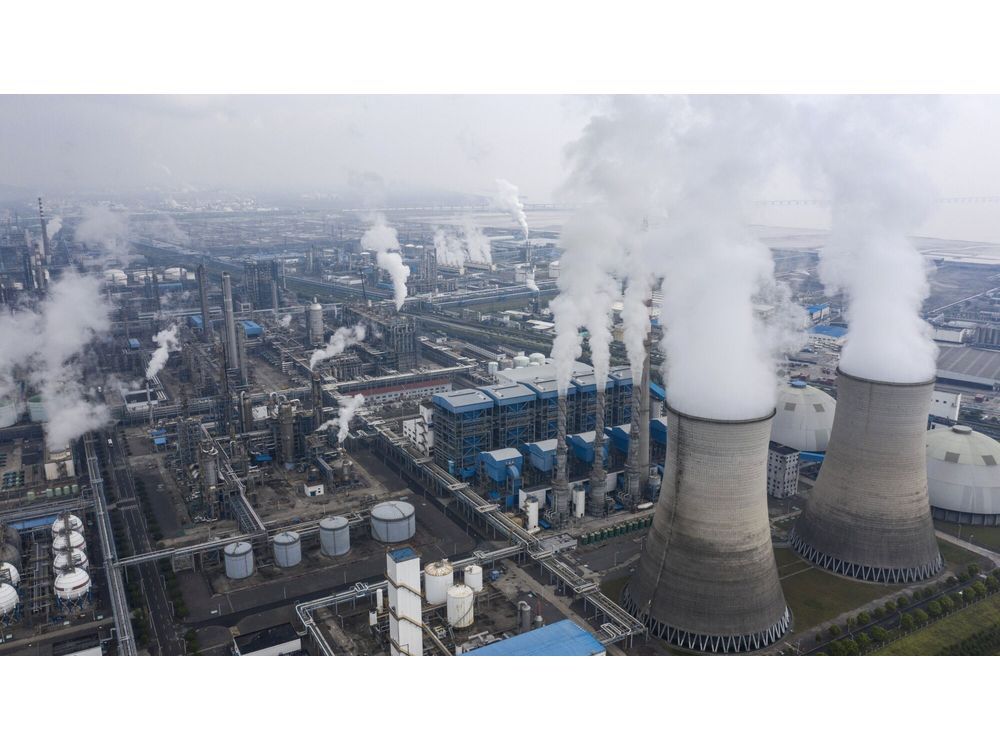Top Stories
China’s Emissions Set to Decline by 1.6 Billion Tons by 2030

URGENT UPDATE: China’s emissions could plunge by 1.6 billion tons by 2030 if the nation secures 17.5 trillion yuan ($2.5 trillion) in green investments over the next five years, according to a new report from the China International Capital Corporation (CICC). This significant shift is anticipated as China gears up to announce its 2035 climate goals ahead of the crucial COP30 talks in Brazil later this year.
The CICC’s research highlights that emissions are projected to peak at 11.3 billion tons in 2028, marking a critical moment in China’s ongoing battle against climate change. The implications of these findings are profound, affecting global emissions patterns as China produces about one-third of the world’s total emissions.
Challenges loom as China’s energy transition faces hurdles from rising coal generation, which threatens to undermine emission control efforts. The urgency of this situation is underscored by reports of faltering demand and escalating trade tensions, complicating China’s policy plans aimed at decarbonizing heavy industries. To achieve its ambitious target of cutting carbon intensity by 65% by 2030 from 2005 levels, the country must ramp up green investments by 40% to approximately 3.5 trillion yuan annually through the decade’s end.
Key investment areas outlined in the report include renewable energy, grid enhancements, energy storage solutions, and upgrades to coal power flexibility. The forecast indicates that wind and solar power capacity will surge from 1,700 GW in 2025 to over 2,800 GW by 2030. Additionally, non-fossil fuel sources are expected to contribute an increase of 230 GW annually, with hydro and nuclear power rising by 38 GW and 57 GW respectively.
Innovative energy storage solutions are also set to expand dramatically, with battery-dominated storage projected to rise by 188 GWh by 2030. The electrification ratio is anticipated to increase to 35%, with clean resources expected to supply 50% of the nation’s power by that time.
However, the transition has not been smooth. The phaseout of outdated industrial capacities faces significant obstacles due to tepid demand, reminiscent of the challenges faced during past supply-side reforms. Crude steel output is likely to be capped around 900 million tons, down from a peak of 1.1 billion tons in 2020, while oil refining capacity may stabilize between 700 million and 800 million tons annually.
In a positive development for electric vehicles, the number of new energy vehicles on the road could soar to over 100 million, with annual sales projections reaching 19.2 million by 2030. Nonetheless, coal may continue to be buoyed by chemical expansions, complicating the overall picture.
As these developments unfold, the world watches closely. China’s climate strategy will not only influence its own future but will have ripple effects on global emissions and international climate agreements. Stay tuned for more updates on this critical situation.
-

 Politics4 weeks ago
Politics4 weeks agoSecwepemc First Nation Seeks Aboriginal Title Over Kamloops Area
-

 World5 months ago
World5 months agoScientists Unearth Ancient Antarctic Ice to Unlock Climate Secrets
-

 Entertainment5 months ago
Entertainment5 months agoTrump and McCormick to Announce $70 Billion Energy Investments
-

 Science5 months ago
Science5 months agoFour Astronauts Return to Earth After International Space Station Mission
-

 Lifestyle5 months ago
Lifestyle5 months agoTransLink Launches Food Truck Program to Boost Revenue in Vancouver
-

 Technology3 months ago
Technology3 months agoApple Notes Enhances Functionality with Markdown Support in macOS 26
-

 Lifestyle3 months ago
Lifestyle3 months agoManitoba’s Burger Champion Shines Again Amid Dining Innovations
-

 Top Stories2 months ago
Top Stories2 months agoUrgent Update: Fatal Crash on Highway 99 Claims Life of Pitt Meadows Man
-

 Politics4 months ago
Politics4 months agoUkrainian Tennis Star Elina Svitolina Faces Death Threats Online
-

 Sports5 months ago
Sports5 months agoSearch Underway for Missing Hunter Amid Hokkaido Bear Emergency
-

 Politics5 months ago
Politics5 months agoCarney Engages First Nations Leaders at Development Law Summit
-

 Technology5 months ago
Technology5 months agoFrosthaven Launches Early Access on July 31, 2025




















